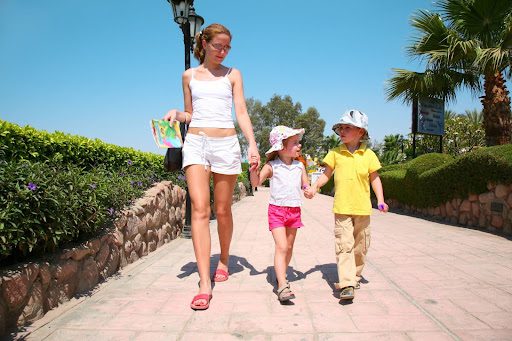Heritage and cultural identity play a pivotal role in shaping a child’s sense of self and belonging. By actively engaging with and celebrating their cultural background, families can foster a strong sense of pride and self-confidence in their children. This engagement not only helps children understand where they come from but also aids in the appreciation of others’ cultures. This article provides various ways that parents can integrate cultural education and activities into their children’s lives to help them connect with their heritage and navigate their cultural identity.
Introducing Culture Through Storytelling and Literature
Books are a wonderful tool for introducing young children to the concepts of heritage and culture. Stories that incorporate elements of a child’s cultural background can serve as both mirrors and windows — mirrors in which they see themselves reflected, and windows through which they view and understand the world. Parents can choose books that are centered on cultural traditions, tales, and heroes. Local libraries or cultural centers often have curated lists of culturally diverse books, making it easier for parents to find age-appropriate and relevant literature.
Engaging Through Cultural Music and Dance
Music and dance are expressions of cultural identity that resonate across age groups. For younger children, participating in dance classes focused on traditional dances offers a fun and engaging way to connect with their culture. Meanwhile, listening to traditional music or learning to play an instrument common to their cultural heritage can be both educational and entertaining. These activities not only keep cultural traditions alive but also allow children to physically experience their heritage.
Learning Language as a Cultural Gateway
Language is often described as the roadmap of a culture. Teaching children to speak the language of their ancestral heritage can provide them with deeper insights into their culture. Language classes, either within the community or through private tutoring, can help foster communication with extended family members who might not speak the dominant language of the country they are living in. Moreover, it strengthens ties to cultural roots and offers cognitive benefits associated with bilingualism.
Celebrating Through Festivals and Culinary Traditions
Participating in cultural festivals provides families with the opportunity to celebrate their heritage in a communal setting. These festivals often offer educational workshops, cultural dances, traditional music, and a sampling of regional cuisine. Similarly, cooking traditional dishes at home can be an educational and bonding activity. Parents can involve their children in the cooking process, teaching them about the ingredients and the roles these dishes play in cultural traditions.
Crafting and Art
Engaging children in arts and crafts that reflect their cultural heritage can spark creativity while educating them about their cultural history. This might include traditional crafting techniques, using indigenous materials, or art styles that are unique to a culture. Many community centers and museums offer workshops specifically for children that focus on traditional arts and crafts.
Community Involvement
Connecting with a larger community that shares the same cultural background can reinforce a child’s cultural identity. Community centers often offer programs and events designed for families or specifically for children, such as language courses, storytelling sessions, and cultural celebrations. Involvement in these programs helps children feel a part of their cultural community.
Addressing Cultural Identity Questions
As children grow, they might start to question their cultural identity, especially if they are exposed to multiple cultures or if their cultural background is different from the majority in their environment. Parents should be prepared to address these questions openly and honestly. Discussing the history, struggles, and triumphs of their cultural group can provide children with a fuller picture of their heritage. Encouraging questions and discussions about cultural identity at home can help children feel supported as they navigate their personal cultural understanding.
Utilizing Digital Resources for Cultural Education
In the digital age, there are numerous resources available online for educating children about their cultural history. Educational websites, virtual museum tours, and cultural documentaries can provide valuable information and insights into specific cultures. These resources can be particularly useful for parents who might not have a strong grounding in their cultural heritage but want to ensure their children learn about their background.
Regular Reflection and Integration
It is beneficial for families to regularly reflect on the ways they have incorporated cultural education and activities into their lives. This not only reassures that they are on the right path but also helps them identify new opportunities for growth and learning. The integration of cultural identity should be a continuous, evolving process that adapts to the changing interests and understanding of the child.
Recognizing and celebrating cultural identity through education and activities is essential for fostering a strong sense of self in children. It encourages not only a connection to their own roots but also an appreciation for the diversity around them. By implementing these strategies, parents can provide their children with valuable tools to explore and embrace their heritage, enriching their lives and broadening their perspectives.
Ready to explore and celebrate your child’s cultural heritage further? At An Open Door Adoption, we’re dedicated to helping families connect with their roots through various support services and resources. Discover how we can assist in enriching your family’s journey with cultural understanding and pride. Contact us today to learn more and let’s honor and celebrate your child’s unique heritage together.

